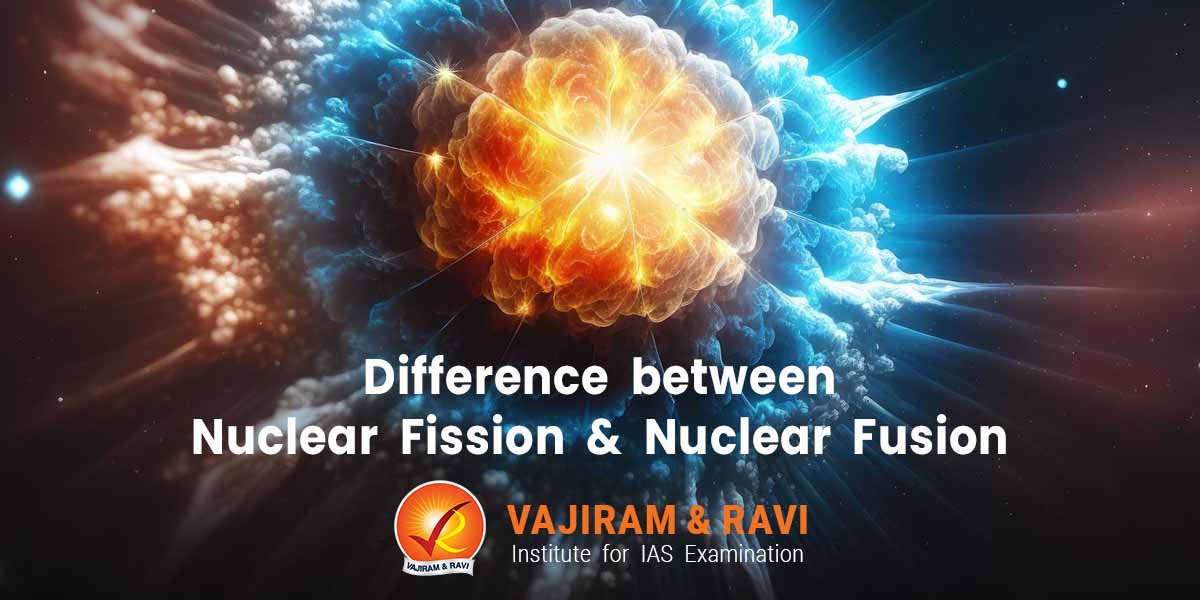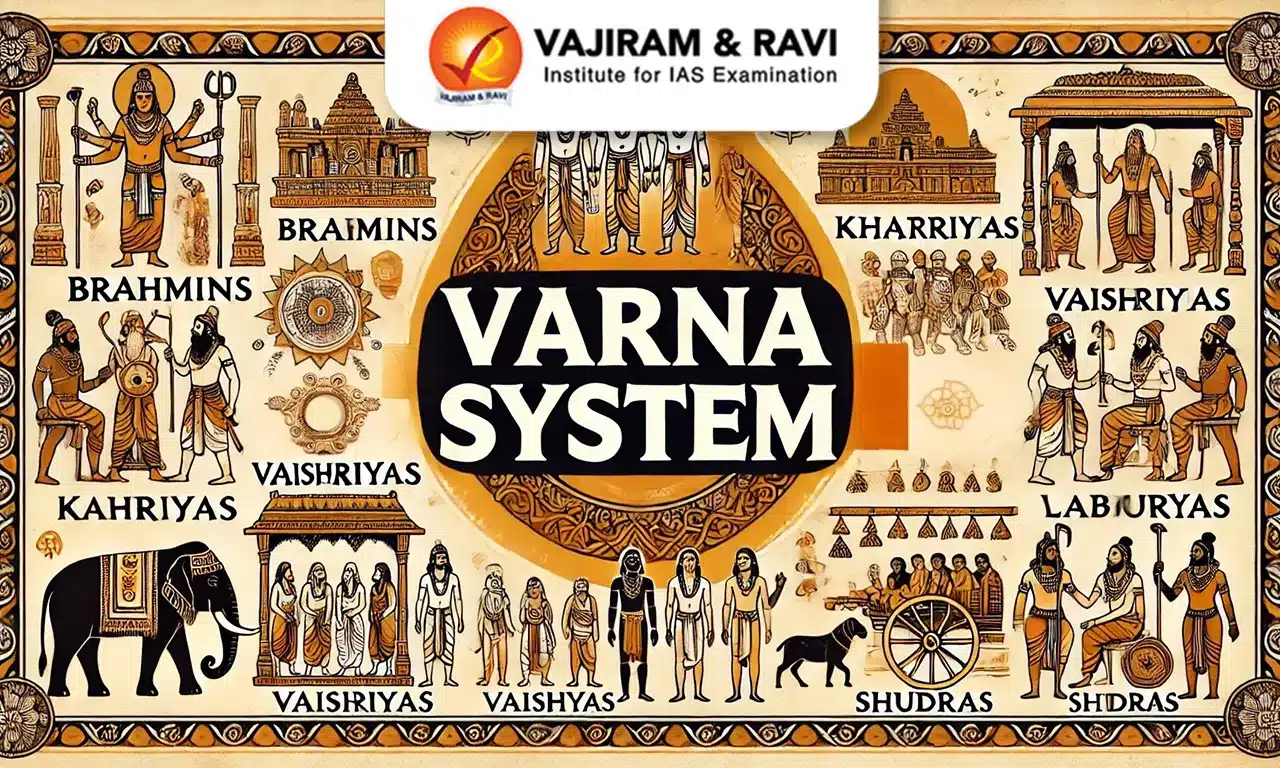Nuclear Fission and Nuclear Fusion are the nuclear reactions that produce energy but with different approaches. Fission is the splitting of a heavy and unstable nucleus into two lighter nuclei whereas; Fusion is the process where two lighter nuclei combine together. Realising their potential, the phenomena of both nuclear reactions are utilised to generate large amounts of nuclear energy.
While fission is commonly used in our nuclear reactors, fusion has shown a promising future of more affordable and clean energy production. With the increasing global demand for clean energy, Nuclear fission and fusion are both important.
What is Nuclear Fusion?
Nuclear Fusion is the most powerful reaction in our observable universe, and it is what powers our Sun and other stars. However, it wasn’t until the 1920s that the physics of nuclear fusion became clear when Arthur Eddington proposed that stars get their energy from the fusion of hydrogen into helium.
Nuclear Fusion Process
In the fusion, two light atomic nuclei combine to form a heavier nucleus.
- Deuterium-tritium (DT) fusion reaction:Deuterium-tritium (DT) fusion produces a neutron and a helium nucleus.
- Researchers are interested in DT reactions because they produce a lot of energy and take place at lower temperatures than other elements.
- Thermonuclear fusion: Fusion occurs in a plasma state, which is a hot and charged gas composed of positive and negative ions (free-moving electrons) with properties distinct from solids, liquids, or gases.
- For fusion to occur, one has to bring the protons or heavier reactant nuclei close enough to overcome the electrostatic repulsion, so that the nuclear strong force helps them fuse.
- This is possible when the nuclei are heated to very high thermonuclear temperatures so that the kinetic energy of the thermal particles is enough to overcome the electrostatic repulsion. Hence, it is also known as thermonuclear fusion.
- For deuterium and tritium nuclei, it requires a temperature of the order of ~10 keV (i.e. ~100 million °C).
- Release of energy: The energy released through a fusion reaction is much larger than that in chemical reactions because the binding energy that holds the nucleons is far greater than the energy that binds atoms and molecules together through electronic linkages.
- Applications:
- Fusion Energy: Fusion can be harnessed using reactors to provide clean energy. The energy in stars including our Sun is based on the fusion reaction, a fusion of hydrogen to form helium.
- Fusion Weapons: Fusion has been utilised to make thermonuclear bombs (Hydrogen bomb), by using small-scale fission bombs.
Harnessing Nuclear Fusion Energy
Considering the amount of energy fusion reactions can provide, its harnessing has been an issue for scientists due to the requirement of high temperatures needed for the reaction. Many technological solutions like Tokamak and other devices have been tried out to perform controlled nuclear fusion in a reactor.
Advantages
The following advantages make Nuclear fusion worth pursuing:
- Abundant energy: Fusing atoms in a controlled way produces much more energy than coal, oil, or gas combustion as well as more than the nuclear fission reactions.
- No GHGs emission: Nuclear reactions including Fusion do not emit harmful substances into the atmosphere such as carbon dioxide or other greenhouse gases.
- No long-lived radioactive waste: Fusion neutrons can induce radioactivity but that can be minimised by a clever choice of structural and materials (proton–boron) solutions so that only short-lived radioactivity is produced.
- Limited risk of proliferation: The fusion reaction is so difficult to initiate that it needs a major technical establishment and it does not use fissile materials such as uranium or plutonium.
Challenges
- High-temperature requirement: Nuclear fusion is much more difficult to create on Earth as it needs hundreds of million degrees Celsius to occur.
- Stability of Plasmas: Fusion takes place in a plasma state (a state of matter), of which confinement in a reactor is very difficult to achieve.
- Due to the inherent instability of charged plasma, researchers are still learning about the behaviour of burning plasmas and their magnetic confinement using Tokamak and Stellarators.
- Engineering challenge: Development of materials that can withstand fusion conditions for decades, such as neutron damage, and no facility exists where materials can be fully tested.
International Initiatives
- Tokamak Research: Many countries individually are working on the Tokamak technology, including India.
- International Thermonuclear Experimental Reactor (ITER) project: ITER is the world’s largest international fusion facility, established in 2007 in France, to demonstrate the scientific and technological feasibility of fusion energy production.
- The project reactor is intended to achieve a fusion power gain of at least ten and to generate 500 Megawatts (MW) of fusion power.
- The ITER members includeChina, the European Union, India, Japan, South Korea, Russia and the United States.
- International Fusion Materials Irradiation Facility (IFMIF): It is a joint European-Japanese project that will be built in Japan.
What is Nuclear Fission?
Nuclear fission is the process of splitting the nucleus of a heavy atom into two or more lighter atoms when the heavy atom absorbs or is bombarded by a neutron. Fission also releases a large amount of energy along with two or more neutrons. The first experimental evidence was provided by German scientists Hahn and Strassman in 1938.
Nuclear Fission Process
A neutron collides with and splits the uranium atom, emitting an enormous amount of energy in the form of heat and radiation.
- For example, Each atom of uranium-235 (U-235) contains 92 protons and 143 neutrons, for a total of 235. The particle arrangement within uranium-235 is somewhat unstable.
- When a U-235 nucleus absorbs an extra neutron, it splits into two parts very quickly. This is referred to as fission.
- Applications:
- Fission reactors: Controlled Fission is being applied in nuclear reactors to make clean electricity.
- Fission Bombs: Atom bombs are based on the uncontrolled fission reaction.
Harnessing Nuclear Fission Energy
Nuclear reactors are used to harness the immense potential of fission reactions by controlling the chain reaction using moderators.
Chain Reaction
- Chain Reaction: Fission chain reactions are caused by interactions between neutrons and fissile isotopes (such as 235U).
- When a uranium atom splits, more neutrons are released. These neutrons continue to collide with other uranium atoms, and the process is repeated indefinitely. This is known as a nuclear chain reaction.
- As a result, the cycle continues to produce a self-sustaining reaction.
- In nuclear power plant reactors, this reaction is controlled to produce the desired amount of heat.
- Critical Mass: Because some neutrons are lost as fission proceeds, not all of the neutrons produced are available to drive further reactions. If enough neutrons are maintained, the fission reaction becomes self-sustaining, and this point is referred to as the ‘critical mass’.
- Controlling the chain reaction: It can be controlled by absorbing some neutrons by the use of cadmium rods and moderators such as heavy water, graphite, etc. that make neutrons slow.
Advantages of Nuclear Fission
- Cheaper than fusion energy: Nuclear fission is a cost-effective and accessible energy source hence, accounts for over 10% of the world’s electricity consumption.
- Once operational, nuclear power is one of the most efficient and cost-effective forms of energy available.
- Clean Technology solution: Nuclear fission, unlike traditional power generation, does not create issues like global warming and air quality concerns.
- Reliable source of energy: Nuclear fission plants operate for 30-50 years, with uranium stockpiled globally for up to another century, enabling uninterrupted mining and refining, despite weather conditions.
Disadvantages
- Harmful waste products: Nuclear fission can produce clean-burning energy, but radioactive waste products can be extremely harmful to the environment.
- Risk of nuclear bombs: There is a significant risk in nuclear fission because the process can be easily harnessed to create devastating weapons such as nuclear bombs.
- Risks of leakage: There have been a few cataclysmic nuclear accidents like the Chernobyl and Fukushima disasters.
- Nuclear fission produces radiation, which is fatal in high doses for humans and animals.
- Requires staggering initial costs: Building a nuclear power plant requires a huge amount of investment, and this is due to the complex technologies and safety measures needed to run it properly.
Difference between Nuclear Fission and Nuclear Fusion
Here are some differences between the two nuclear reactions:
| Features | Nuclear Fission | Nuclear Fusion |
| Process | – A neutron is used to split a nucleus of a larger atom into two smaller nuclei atoms. | – Nuclei of two lighter atoms fuse together to form a heavier atom. |
| Natural occurrence | – Can occur in a uranium deposit. | – Fusion occurs in stars including the sun |
| Conditions | – Needs critical mass of fissile substance and high-speed neutrons | – Needs plasma state at high-temperature environment |
| Chain reaction | – Involves a chain reaction | – No chain reaction |
| By product | – Radioactive materials include cobalt-60, cesium-137, and iridium-192 | – No byproducts |
| Nuclear Fuel | – Uranium | – Basic: Deuterium and Lithium
|
| Energy Requirement | – Requires less energy to split two atoms in a fission reaction | – High energy (temperature) is needed to bring protons close enough for nuclear forces to overcome electrostatic repulsion |
| Cost-effective | Low ongoing operational costs and cost-effective than fusion | Needs to be larger and therefore more costly |
Last updated on July, 2025
→ UPSC Notification 2025 was released on 22nd January 2025.
→ UPSC Prelims Result 2025 is out now for the CSE held on 25 May 2025.
→ UPSC Prelims Question Paper 2025 and Unofficial Prelims Answer Key 2025 are available now.
→ UPSC Calendar 2026 is released on 15th May, 2025.
→ The UPSC Vacancy 2025 were released 1129, out of which 979 were for UPSC CSE and remaining 150 are for UPSC IFoS.
→ UPSC Mains 2025 will be conducted on 22nd August 2025.
→ UPSC Prelims 2026 will be conducted on 24th May, 2026 & UPSC Mains 2026 will be conducted on 21st August 2026.
→ The UPSC Selection Process is of 3 stages-Prelims, Mains and Interview.
→ UPSC Result 2024 is released with latest UPSC Marksheet 2024. Check Now!
→ UPSC Toppers List 2024 is released now. Shakti Dubey is UPSC AIR 1 2024 Topper.
→ Also check Best IAS Coaching in Delhi
















